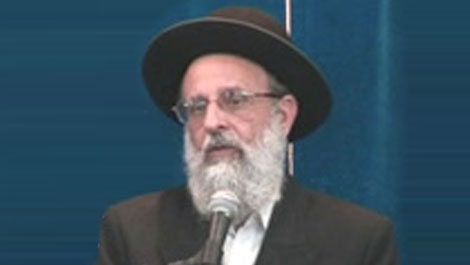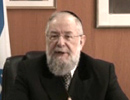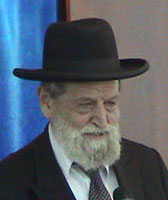Beit Midrash
- Sections
- Peninei Halakha
- Shabbat and Holidays
- Jewish Holidays
- Lag Ba'omer
Some have a custom to refrain from cutting their sons’ hair until they reach the age of three. When their son reaches that age, they cut his hair and leave his sidelocks. This way, they train him to keep the mitzva of "You shall not round off the side-growth on your head" (Vayikra 19:27), which means that one may not cut his hair in a rounded fashion by removing the sidelocks.
Those who follow this custom find an allusion to it in the mitzva of orla, the Torah prohibition on eating fruit from a tree for the first three years after it planting. The Sages state that the three years of orla allude to the first three years of a child’s life, before he learns to speak and converse, when he cannot fulfill any mitzvot. "In the fourth year all its fruit shall be set aside for jubilation before the Lord" (Vayikra 19:24), meaning that his father consecrates him for Torah study (Tanĥuma, Kedoshim 14). Those who follow this custom thus explain that during a child’s first three years of life, he is like a tree that is subject to the prohibition of orla, and thus one should not cut his hair. When the fourth year arrives, however, and he is capable of maintaining some degree of sanctity, they cut his hair and leave his sidelocks, which is one of the first mitzvot that we fulfill through him. In addition, this is a special mitzva because it causes the child to become recognizably Jewish.
Since this is the mitzva through which we begin educating the child to fulfill the mitzvot, it is customary to rejoice, in order to encourage the child to love mitzvot. Therefore, the parents of the child invite relatives and friends to celebrate together with food and drink. This festive event is called a ĥalaka or upsherin.
Many Jews from the Galilee had a custom to cut their son’s hair near the grave of R. Shimon bar Yoĥai in Meron, so that the child’s inauguration into mitzva observance could be accompanied by connection to a great and righteous sage. Jews from Jerusalem, who lived far from Meron, customarily went to the burial site of Shimon Ha-Tzadik, north of the Old City of Jerusalem. Members of other communities would cut their sons’ hair near the local synagogue. Some have a custom to ask a Torah scholar to cut the first lock of hair.
Some people have a custom to go to Meron on Lag Ba-omer and cut the hair of any son whose third birthday fell or will fall within a few months of Lag Ba-omer. Some take care not to cut a child’s hair before his third birthday. Therefore, if his birthday falls out after Lag Ba-omer, they wait until his birthday to cut his hair. If he was born a few weeks before Lag Ba-omer, they wait until Lag Ba-omer to cut his hair. But if he was born several months before Lag Ba-omer, they cut his hair on his birthday.[4]
Despite this, it is important to emphasize that there is no obligation to follow these customs. Furthermore, the custom of cutting the hair of young children is not mentioned at all in Rambam, Shulĥan Arukh, or the works of the other renowned poskim. Therefore, anyone who wants to cut his son’s hair even before his third birthday may do so, and such is the practice of many Torah scholars.
[4] Arizal cut his son’s hair at the age of three, on Lag Ba-omer, in Meron. See Responsa Arugat Ha-bosem, oĥ 210.






















